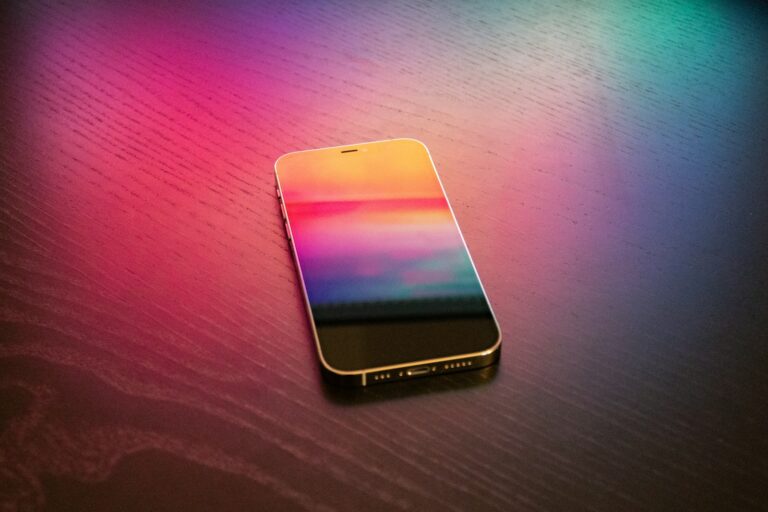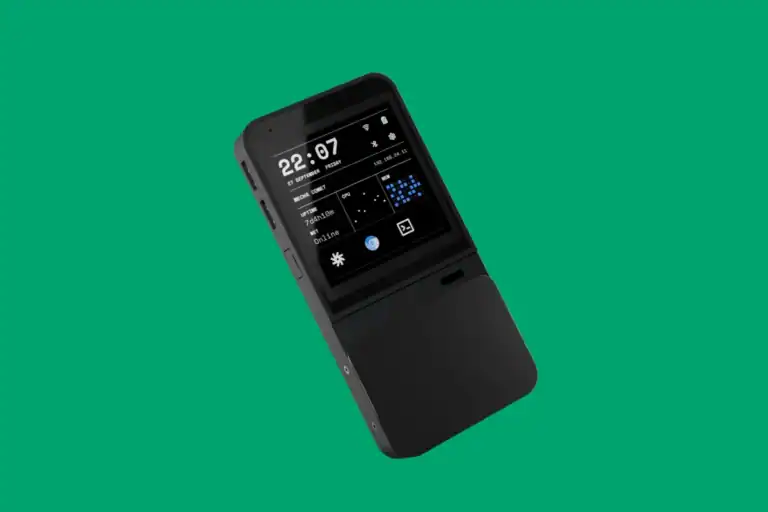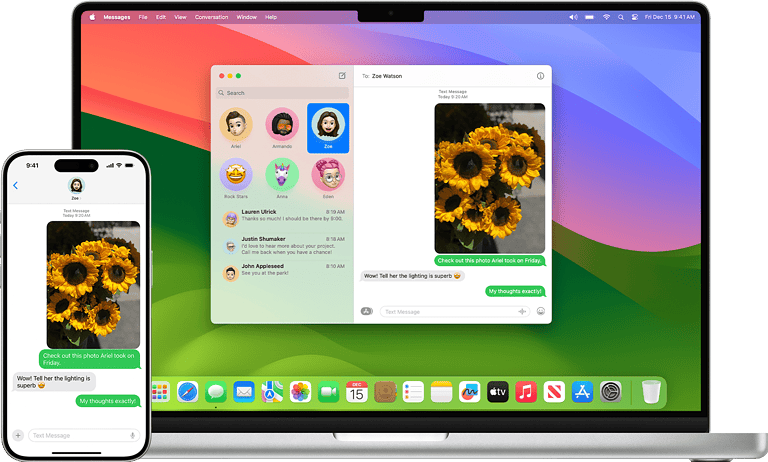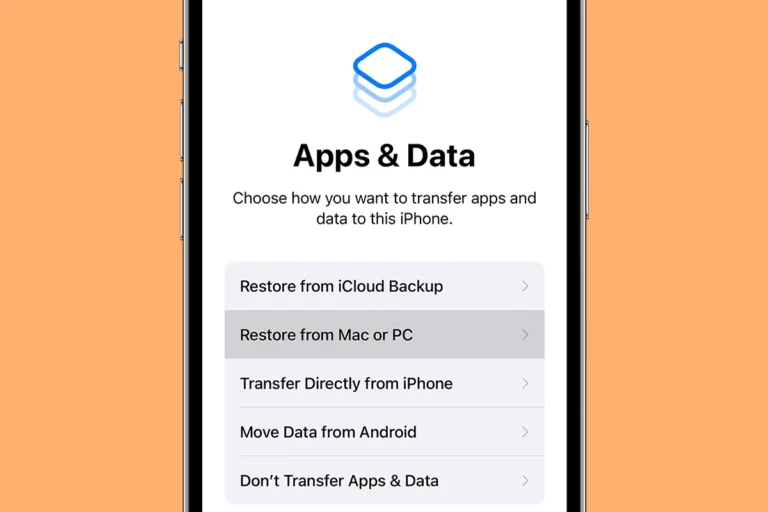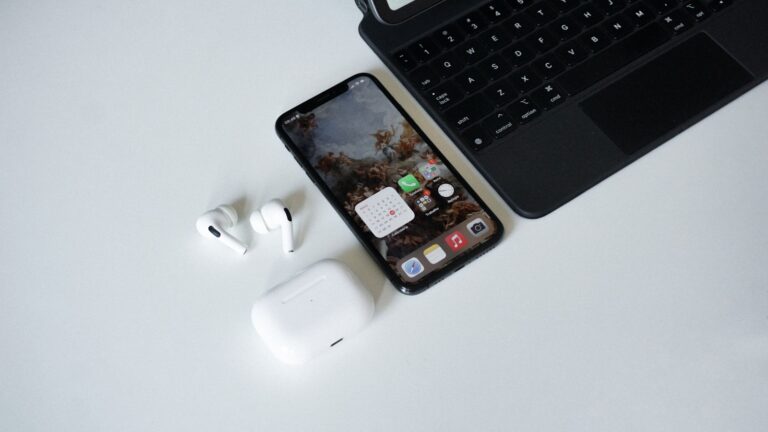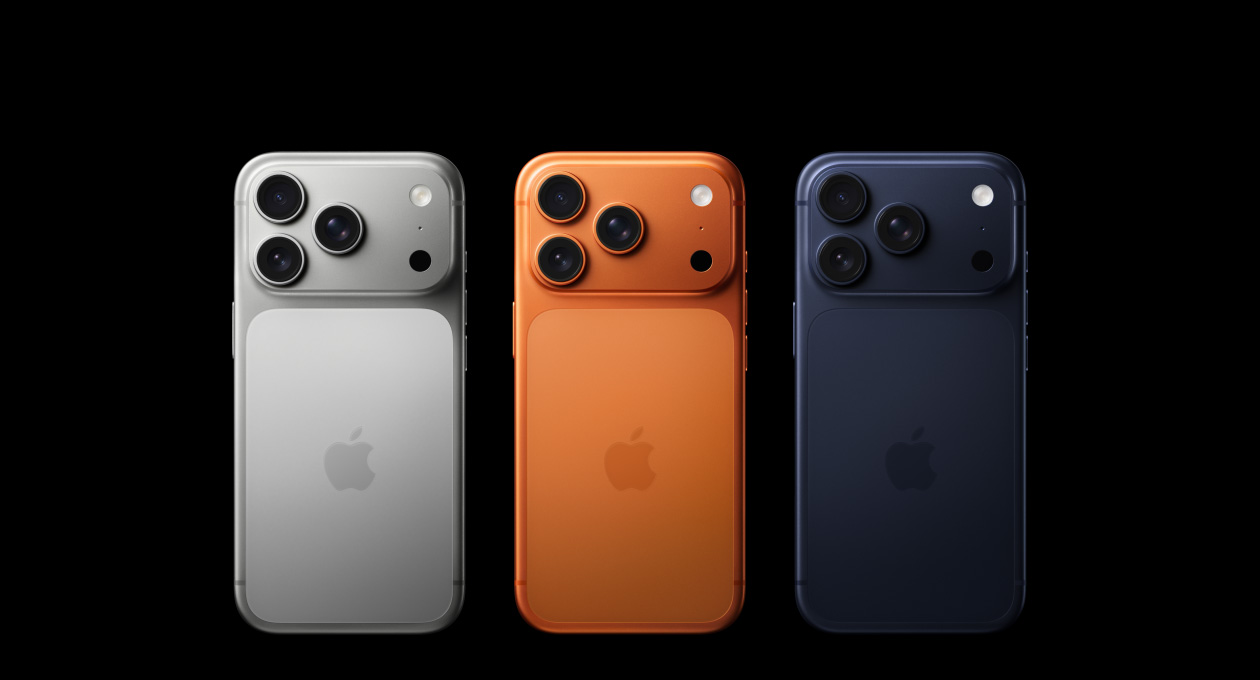
Choosing a new smartphone can feel overwhelming with so many options on the market today. From powerful cameras to lightning-fast processors, today’s phones offer features that seemed impossible just a few years ago. Finding the best smartphone for your needs means considering what you value most—whether that’s battery life, camera quality, or ecosystem integration with your other devices.
The smartphone landscape continues to evolve with major players like Apple, Samsung, and Google releasing new models every year. Each brand offers unique strengths and experiences that might appeal to different users. As we explore the top choices available right now, we’ll help you navigate the options to find a device that fits both your lifestyle and budget.
1: Galaxy S25 Ultra
The Samsung Galaxy S25 Ultra stands as one of the most powerful smartphones available today. This flagship device comes with all the specs and features you might need when investing over $1,000 in a phone, making it a solid choice for power users.
Battery life on the S25 Ultra is impressive. Users report getting up to 1.5 days of use with around 4 hours of screen time, still having 20% battery remaining. This represents a significant upgrade from previous generations.
Camera capabilities are exceptional on this model. The S25 Ultra can record 4K video at up to 120 frames per second, while the regular S25 models max out at 60 fps. You’ll also get 8K video recording, giving you future-proof video capabilities.
The phone feels substantial in hand compared to competitors like the OnePlus 13. Its premium build quality is immediately noticeable when you hold it.
At $1,300, the S25 Ultra is definitely an investment. However, you’re getting a reliable and well-equipped smartphone with top-tier specifications.
Some reviewers have noted that despite its technical prowess, the S25 Ultra feels somewhat boring in its design. Samsung has maintained a similar aesthetic for several generations now.
The device offers excellent future-proofing, meaning you won’t need to upgrade for several years. This makes the higher price point easier to justify if you plan to keep your phone for an extended period.
2: iPhone 17 Pro Max
The iPhone 17 Pro Max is Apple’s latest flagship for 2025, raising the bar once again for performance, battery life, and camera innovation. If you’re looking for the ultimate iPhone experience, this is the device to beat.
Battery life has taken another leap forward. Thanks to Apple’s new A19 Pro chip and more efficient display technology, the iPhone 17 Pro Max comfortably delivers all-day power—even for heavy users. Apple claims it offers the longest battery life ever on an iPhone.
The camera system is a major highlight. Apple has introduced an improved 48MP main sensor with a larger aperture and an upgraded 5x telephoto lens across more models, not just the Pro Max. Combined with the latest Apple Intelligence features, the iPhone 17 Pro Max delivers professional-grade photography and video, including 8K recording with advanced stabilization.
Performance is unmatched. The A19 Pro chip, built on a 2nm process, delivers faster speeds and better efficiency than any previous iPhone. Multitasking, gaming, and creative workflows feel seamless.
Design-wise, Apple has refined the titanium build introduced last year, making the phone lighter and more durable. The bezels are even thinner, giving the display a more immersive look without increasing the overall size.
At a premium price point, the iPhone 17 Pro Max isn’t for everyone. But if you value ecosystem integration, camera excellence, and long-term software support, it’s the best iPhone you can buy today.
3: Pixel 9 Pro
The Google Pixel 9 Pro stands out as one of the most impressive smartphones of 2024. With its sleek design and powerful features, it delivers exceptional value for your money.
Camera quality remains a standout feature on the Pixel line. The Pixel 9 Pro comes equipped with a 50 MP main camera for incredible image quality, alongside a 48 MP telephoto lens for professional-level zoom capabilities.
The display on this device is truly remarkable. You’ll enjoy vibrant and rich colors with peak brightness reaching 3000 nits, making outdoor viewing comfortable even on sunny days.
Battery life has improved from previous models, letting you get through a full day of use without constantly searching for a charger. The fast-charging capability also means less time tethered to an outlet.
The Pixel 9 Pro runs Android 15, which provides a clean, intuitive interface. Google’s AI features are integrated throughout the system, though some users find them less impressive than initially advertised.
Performance is snappy thanks to Google’s latest processor. You’ll experience minimal lag when multitasking or running demanding applications.
Even Apple enthusiasts have taken notice. The Pixel 9 Pro has been crowned Phone of the Year by TechRadar and stands as a worthy competitor to the iPhone 16 Pro Max and Samsung S25 Ultra.
4: Huawei Pura 70 Ultra
The Huawei Pura 70 Ultra has quickly established itself as a camera powerhouse in the smartphone market. It currently holds the top position in DXOMARK’s camera ranking, demonstrating exceptional performance across all testing areas.
One of the most impressive features is its large one-inch camera sensor. This hardware enables the phone to capture stunning photos in both bright daylight and darker environments, giving you versatility in various shooting conditions.
The Pura 70 Ultra comes with a generous 6.8-inch display, providing you with ample screen real estate for viewing your photos and videos. It runs on EMUI 14.2 and offers various RAM and storage configurations to suit your needs.
Camera performance is where this device truly excels. The rear camera system includes a 50MP main shooter that delivers exceptional detail and clarity. Many users have noted the camera’s impressive speed, allowing you to capture fleeting moments without frustrating lag.
The phone’s build quality and design are premium, fitting its flagship status. While it doesn’t run standard Android or use Snapdragon processors, some reviewers believe it could have been a serious competitor to Samsung if it did, noting it might have been the best Android device with those specifications.
5: Google Pixel 9 Pro XL
The Google Pixel 9 Pro XL stands out as one of the most impressive smartphones available today. This flagship device gives you exceptional camera capabilities with its powerful triple rear camera system that excels even in challenging lighting conditions.
You’ll appreciate the camera’s versatility, offering super-close closeups and sharp selfies. The Pixel 9 Pro XL can capture high-quality video up to 20x with Super Res Zoom, perfect for recording distant subjects with remarkable clarity.
Low light photography is no longer a challenge with this device. The Pixel 9 Pro XL features Night Sight Video, allowing you to take clear videos even when lighting isn’t ideal.
Many users have praised the phone’s software experience. The clean interface and helpful AI features make daily tasks simpler and more intuitive. You’ll find the integration with Google services seamless and convenient.
Battery life is another strong point for the Pixel 9 Pro XL. Users report great battery performance, addressing a common pain point in previous generations.
The build quality feels premium, with a sleek design that’s comfortable to hold despite its larger size. You can choose from several attractive color options, including Porcelain.
For those comparing flagship options, many consider it a worthy competitor to the Samsung Galaxy S25 Ultra, particularly if you value camera quality and clean software experience.
6: Honor Magic6 Pro
The Honor Magic6 Pro stands out as one of the most impressive smartphones on the market today. It has earned top rankings from DXOMARK in several categories, including best camera, battery, display, and selfie camera.
You’ll appreciate the powerful performance of this device, which runs on the latest Snapdragon 8 Gen 3 processor. With 12GB of RAM and 512GB of storage, you have plenty of space and speed for all your apps and media.
The phone’s battery life is exceptional, giving you more time between charges. It features a silicon-carbon battery and offers fast charging capabilities to get you back up and running quickly.
Photography enthusiasts will love the Magic6 Pro’s stunning camera system. The image quality rivals professional equipment in many situations, making it perfect if you value mobile photography.
The display is another highlight, offering vivid colors and excellent brightness that works well even in outdoor settings. Your content will look fantastic whether you’re gaming, watching videos, or browsing photos.
Honor has included innovative features like eye-tracking technology that allows you to interact with your phone in new ways. This kind of forward-thinking design helps the Magic6 Pro stand apart from competitors.
While the device runs on Android, some reviews note that Honor’s interface modifications are significant. You might need some time to adjust if you’re coming from a different Android device.
7: Asus ROG Phone 9 Pro
If you’re serious about mobile gaming, the ROG Phone 9 Pro deserves your attention. This gaming smartphone stands out as one of the most powerful devices on the market today.
At its core, the ROG Phone 9 Pro runs on the cutting-edge 3-nanometer Snapdragon 8 Elite Mobile Platform. This processing powerhouse is paired with an impressive 24GB of RAM and 1TB of storage, giving you plenty of space for your gaming library.
The display is a standout feature with its 6.78-inch AMOLED screen. You’ll enjoy silky-smooth gaming thanks to the 185Hz refresh rate, which makes even the most demanding games look fluid and responsive.
Battery life won’t let you down during extended gaming sessions. The device packs a substantial 5800mAh battery that keeps you gaming longer without hunting for a charger.
Camera performance hasn’t been overlooked either. The 50MP gimbal camera system delivers excellent photo quality when you’re not focused on gaming.
What makes this phone particularly appealing is how it balances gaming features with everyday usability. Despite its gaming focus, the design is relatively subtle, making it suitable as your daily driver.
The price point is premium, reflecting its high-end specifications. However, if you want what many consider the most powerful mobile device currently available, this investment delivers exceptional performance.
8: OnePlus 13
The OnePlus 13 has emerged as one of the most impressive smartphones of 2025. It combines cutting-edge technology with practical features that you’ll appreciate in daily use.
This flagship device is the first OnePlus phone to capture 4K Dolby Vision video with every camera, including both front and rear lenses. This gives you professional-quality video recording capabilities wherever you go.
Performance is a standout feature of the OnePlus 13. It’s powered by the Qualcomm Snapdragon 8 Gen 3 chipset, delivering exceptional speed and efficiency for all your apps and games.
What might surprise you is how the OnePlus 13 compares to premium competitors. It’s considerably cheaper than the Samsung S25 Ultra despite using the same processor. In some benchmark tests, it even outperforms Samsung’s flagship.
The display quality continues OnePlus’s tradition of excellence. You’ll enjoy vibrant colors and smooth scrolling that make everything from reading to gaming more enjoyable.
Camera performance has taken a significant leap forward. The OnePlus 13 features powerful cameras that compete with the best in the industry, especially in challenging lighting conditions.
Durability is another area where this phone shines. You’ll appreciate the high water resistance rating that protects your investment from accidental spills or rain.
For the price, the OnePlus 13 offers exceptional value. You get premium features and performance without the premium price tag of competing flagships.
9: Oppo Find X8
The Oppo Find X8 stands out as a powerful flagship smartphone with impressive specifications. This compact device offers a great balance of performance and features, making it a strong contender in the premium phone market.
You’ll appreciate the Find X8’s powerful camera system, which includes AI Telescope Zoom and Lightning Snap features. The AI Photo Remaster function helps you enhance your photos with advanced processing technology.
Under the hood, the phone runs on MediaTek’s Dimensity 9400 chip, which outperforms many competitors including the Snapdragon 8 Gen 3 in both performance and efficiency metrics.
Battery life won’t disappoint you either, with the Find X8 packing a substantial 5630mAh battery. This capacity ensures you can get through even your busiest days without constantly searching for a charger.
The display delivers excellent visual quality, complemented by great haptics and sound. Users have praised the overall experience, with one owner calling it “the best android compact phone available.”
While the design might seem somewhat generic to some reviewers, the overall package offers tremendous value. You’re getting flagship-level features at a price point comparable to standard iPhone and Galaxy S models.
If you’re looking for a powerful Android phone with exceptional cameras and performance, the Oppo Find X8 deserves your consideration. Its combination of features makes it particularly appealing if you prefer a more compact form factor without sacrificing capabilities.
10: Xiaomi Mi 15 Ultra
The Xiaomi 15 Ultra stands out in the smartphone market with its exceptional camera system. This flagship device features a powerful quad-lens camera setup that photography enthusiasts will appreciate.
You’ll find an impressive 200-megapixel periscope lens that complements the other cameras beautifully. The zoom and low-light performance are particularly noteworthy, giving you professional-quality photos in various conditions.
Beyond photography, the Xiaomi 15 Ultra delivers silky smooth performance thanks to its powerful processor. You can expect AI capabilities including Google Gemini integration for enhanced functionality in your daily tasks.
The display is another highlight, offering gorgeous, super bright visuals that make everything from streaming to gaming more enjoyable. Battery life won’t disappoint you either, with solid longevity for day-to-day use.
Charging is remarkably fast with this device. You get 90W fast charging and 80W wireless charging speeds, significantly reducing downtime when you need a power boost.
While the phone offers exceptional features, some reviewers note that the design might not appeal to everyone. However, if you prioritize camera quality and performance over aesthetics, the Xiaomi 15 Ultra deserves your consideration as one of the best smartphones available.
Key Features of Modern Smartphones
Today’s smartphones pack impressive technology into slim devices that fit in your pocket. The features below represent what matters most when choosing your next phone.
Display Technologies
Modern smartphones feature high-resolution screens that deliver crisp images and vibrant colors. Most devices now come with Full HD, Quad HD, or even 4K displays to ensure sharp, detailed visuals for everything you view on your device.
OLED and AMOLED displays offer deeper blacks and better contrast than traditional LCD screens. These technologies also help save battery life since they can turn off individual pixels when displaying black.
Screen size matters too. You’ll want to find a display size that fits comfortably in your hands. The average screen size has grown from about 4 inches to 6+ inches over the past decade.
Refresh rates have also improved, with many premium phones offering 90Hz or 120Hz displays. This makes scrolling smoother and gaming more responsive compared to standard 60Hz screens.
Battery Life and Charging
Battery performance remains one of the most crucial smartphone features. Most new devices now offer all-day battery life with capacities ranging from 3,000 to 5,000 mAh, depending on the phone size and model.
Fast charging technology has become standard across most devices. Modern phones can reach 50% charge in about 30 minutes with the right charger. Some manufacturers advertise charging speeds of 25W, 45W, or even higher.
Wireless charging offers convenience without plugging in cables. Simply place your phone on a compatible charging pad. Some phones even support reverse wireless charging, allowing you to charge earbuds or other small devices from your phone.
Battery optimization features help extend usage time between charges. These smart systems learn your usage patterns and adjust power consumption accordingly.
Camera Capabilities
Smartphone cameras have evolved dramatically, with many now rivaling dedicated digital cameras. Multi-lens systems typically include main, ultrawide, and telephoto lenses to handle different shooting scenarios.
The Google Pixel series offers innovative features like Magic Eraser (to remove unwanted objects), Night Sight (for low-light photography), and call screening capabilities. These computational photography features elevate what’s possible with a smartphone camera.
Video recording has improved substantially, with most flagship phones supporting 4K or even 8K video. Stabilization technology keeps your footage smooth even when your hands aren’t perfectly steady.
Special modes enhance your photography options:
- Portrait mode blurs backgrounds for professional-looking shots
- Night mode captures clear images in dark environments
- Macro mode lets you focus on tiny details up close
AI-powered scene recognition automatically adjusts settings for optimal photos in any environment.
Smartphone Operating Systems
The operating system on your smartphone determines how you interact with it daily. The two main players in this field are Android and iOS, each offering unique features and experiences.
Android OS
Android dominates the global mobile market with 71.75% market share as of early 2025. This Google-developed OS offers you remarkable customization options that iOS simply doesn’t match.
You can personalize nearly everything on your Android device – from launchers to widgets, keyboards, and default apps. This flexibility extends to hardware choices too, with devices ranging from budget-friendly options to premium flagships from Samsung, Google, Xiaomi, and many others.
Android excels in its open ecosystem. You can:
- Install apps from multiple sources (not just Google Play)
- Access your files freely without special software
- Customize your home screen extensively
The latest version brings improved privacy controls, more efficient battery management, and enhanced AI features. If you value freedom of choice and customization, Android likely offers what you need.
iOS
Apple’s iOS holds about 27.78% of the mobile OS market worldwide. What iOS lacks in customization, it makes up for with polish, security, and a seamless user experience.
You’ll find iOS exclusively on Apple’s iPhone lineup. This tight hardware-software integration creates exceptionally smooth performance and typically longer software support than most Android devices receive.
iOS stands out for its:
- Privacy features that give you more control over your data
- Consistent update availability across supported devices
- High-quality curated App Store experience
- Seamless integration with other Apple products
The iOS ecosystem works exceptionally well if you use other Apple devices. Features like AirDrop, Handoff, and iCloud make sharing between your iPhone, Mac, and iPad effortless.
The latest iOS version enhances customization options while maintaining the simplicity that many users appreciate. iOS remains the go-to choice if you value security and ecosystem cohesion.
Frequently Asked Questions
What are the top-rated smartphones available in 2025?
The top-rated smartphones in 2025 include the Galaxy S25 Ultra, which offers exceptional processing power and camera capabilities.
The iPhone 17 Pro Max now leads Apple’s lineup, delivering the best battery life ever on an iPhone, along with a refined titanium design and the powerful A19 Pro chip.
Google’s Pixel 9 Pro and Pixel 9 Pro XL remain favorites for computational photography, while the Huawei Pura 70 Ultra continues to dominate camera benchmarks.
How does the latest iPhone model compare with its Android counterparts?
The iPhone 17 Pro Max excels in video recording, ecosystem integration, and raw performance thanks to the A19 Pro chip.
Android flagships like the Galaxy S25 Ultra and Pixel 9 Pro XL offer more customization and often larger batteries, but iOS efficiency plus Apple Intelligence features give the iPhone a unique edge.
Which smartphones are considered to have the best camera systems?
- The iPhone 17 Pro Max shines in both photography and videography, with its upgraded 48MP sensor and 8K video support.
- The Galaxy S25 Ultra offers unmatched versatility with its 200MP primary sensor and advanced zoom.
- The Pixel 9 Pro continues to lead in computational photography.
- The Huawei Pura 70 Ultra remains a powerhouse with its 1-inch sensor and variable aperture.
Which smartphone provides the best value for money under a specific budget?
Mid-range models offer impressive value when buying a new phone. The Pixel 9a provides nearly flagship-level photography at half the price of premium models.
Samsung’s Galaxy A55 delivers excellent performance for everyday tasks with a bright AMOLED display and good battery life. It’s a great option under $500.
The Nothing Phone 2a combines unique design with solid performance at around $350. Its clean software and distinctive LED notification system stand out in the mid-range market.
For those on tighter budgets, Motorola’s G Power offers multi-day battery life and acceptable performance under $300.
What features distinguish the leaders in the current smartphone market?
AI capabilities have become a major differentiator. The Pixel 9 Pro leads with features like enhanced photo editing, real-time translation, and contextual awareness.
Camera innovation continues to advance rapidly. The Galaxy S25 Ultra’s 200MP main sensor and 10x optical zoom provide versatility for photography enthusiasts.
Display technology has improved with adaptive refresh rates that balance smoothness and battery life. The iPhone 16 Pro Max and Galaxy S25 Ultra both offer variable refresh from 1Hz to 120Hz.
Battery technology and charging speeds have seen significant upgrades. Several flagships now support 100W+ charging that can fill batteries in under 30 minutes.
What advancements in smartphone technology have emerged this year?
Satellite connectivity has expanded beyond emergency services to limited messaging capabilities on several flagship models. This provides connectivity in remote areas without cellular service.
Foldable displays have become more durable and affordable. Samsung’s Z Fold 5 and Z Flip 5 have been joined by competitive offerings from Google, Motorola, and OnePlus.
AI processing has moved increasingly on-device, improving privacy and reducing cloud dependence. This allows for faster, more secure processing of sensitive information.
Battery technology has improved with silicon-carbon anodes appearing in premium models, offering higher capacity in the same physical space.
Which smartphones are considered to have the best camera systems?
The Pixel 9 Pro continues Google’s computational photography dominance. Its ability to capture moving subjects and process night photos remains industry-leading.
The iPhone 16 Pro Max excels in video recording with support for 8K recording and improved stabilization. Its Photonic Engine delivers consistent results across lighting conditions.
Huawei’s Pura 70 Ultra features innovative variable aperture technology and a large 1-inch sensor. This combination delivers exceptional low-light performance and natural depth of field.
The Galaxy S25 Ultra provides the most versatile camera system with its 200MP main sensor, ultrawide lens, and two telephoto lenses. This setup offers unmatched zoom capabilities and detail.
You should consider how you use your phone when evaluating camera systems. Different manufacturers prioritize different aspects of photography and video recording.

